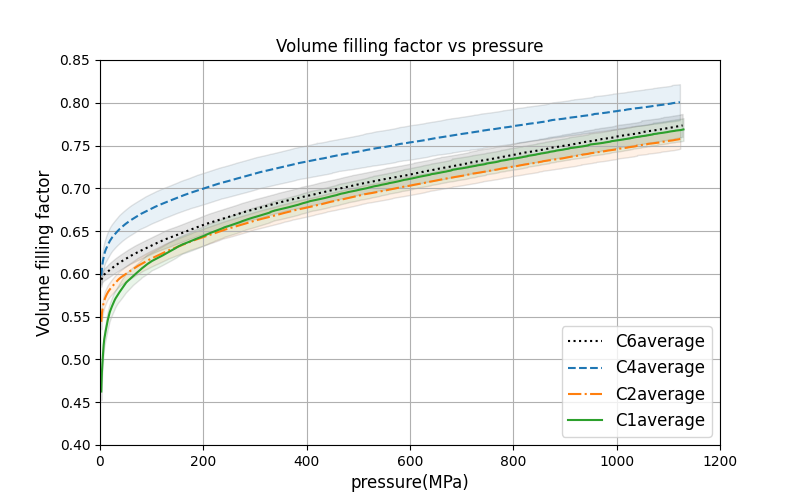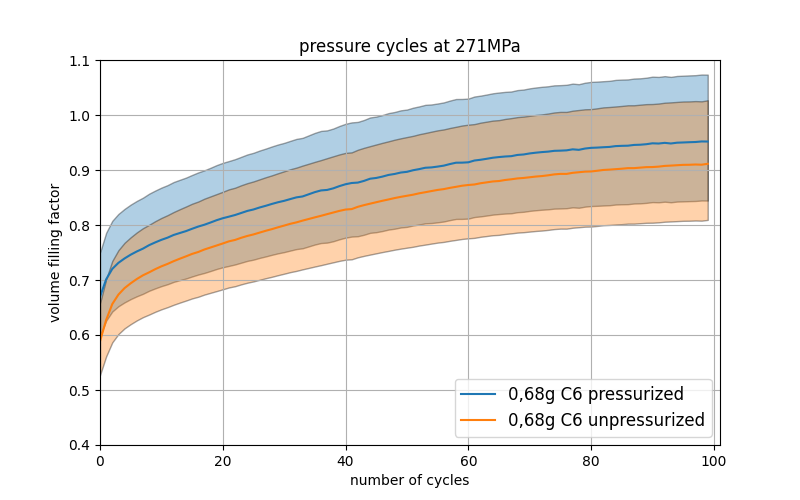Compression measurements with polydisperse SiO2 dust
- Technische Universität Braunschweig, Institut für Geophysik und extraterrestrische physik, (maximilian.timpe@tu-braunschweig.de)
To describe comets and planetesimals with models and simulations, the material properties are required. To determine the compression behaviour of polydisperse spherical silicon dioxide dust as an analog material for these objects, a hand-operated 15t(US) hydraulic press was used to perform compression experiments. The force of this press was directed into a carbide piston of 12.25mm diameter to achieve pressures of almost 1.2GPa in the samples. Four different particle size distributions of dust were used in the experiments to investigate the effect of particle size distribution. The median particle radii for the dust types are: 0.01micron for C1, 0.35micron for C2 0.57micron for C4 and 2.2micron for C6 with differing distribution widths. The results of these experiments show that the polydisperse dust can be compressed to higher filling factors than the theoretical maximum of monodisperse dust. It also becomes clear that the dust is elastic and partially expands again when the pressure is released. The size distribution appears to have a significant effect, with wider distributions leading to higher compressibility as seen in Figure 1 (C4 has the widest size distribution). In measurements that subjected the dust to multiple pressure cycles, the filling factor kept increasing with every cycle (Figure 2).

Figure 1: Mean compression curves for the 4 different size distributions.

Figure 2: Pressure cycles with C6 dust
How to cite: Timpe, M., Kreuzig, C., and Blum, J.: Compression measurements with polydisperse SiO2 dust, Europlanet Science Congress 2024, Berlin, Germany, 8–13 Sep 2024, EPSC2024-543, https://doi.org/10.5194/epsc2024-543, 2024.